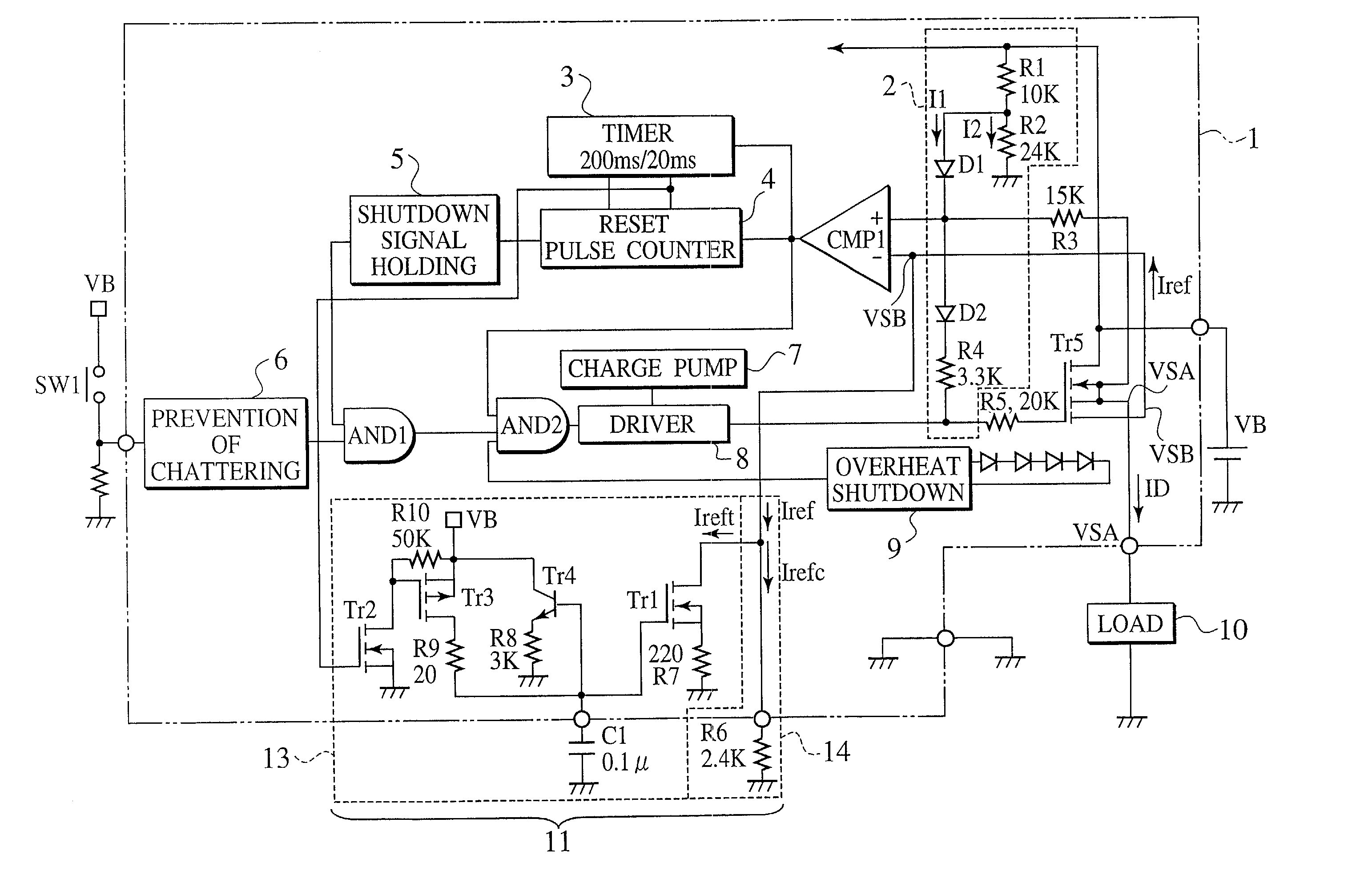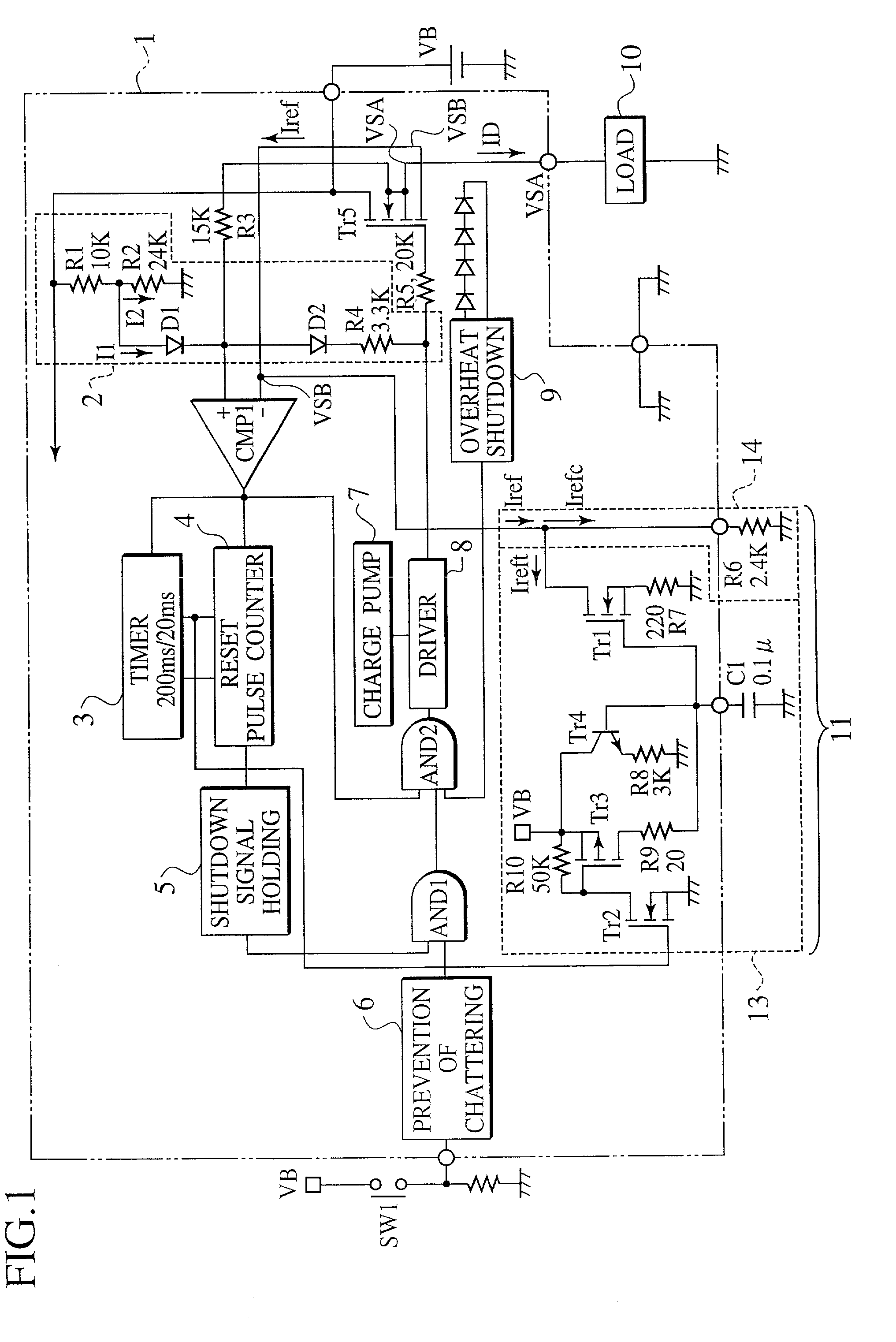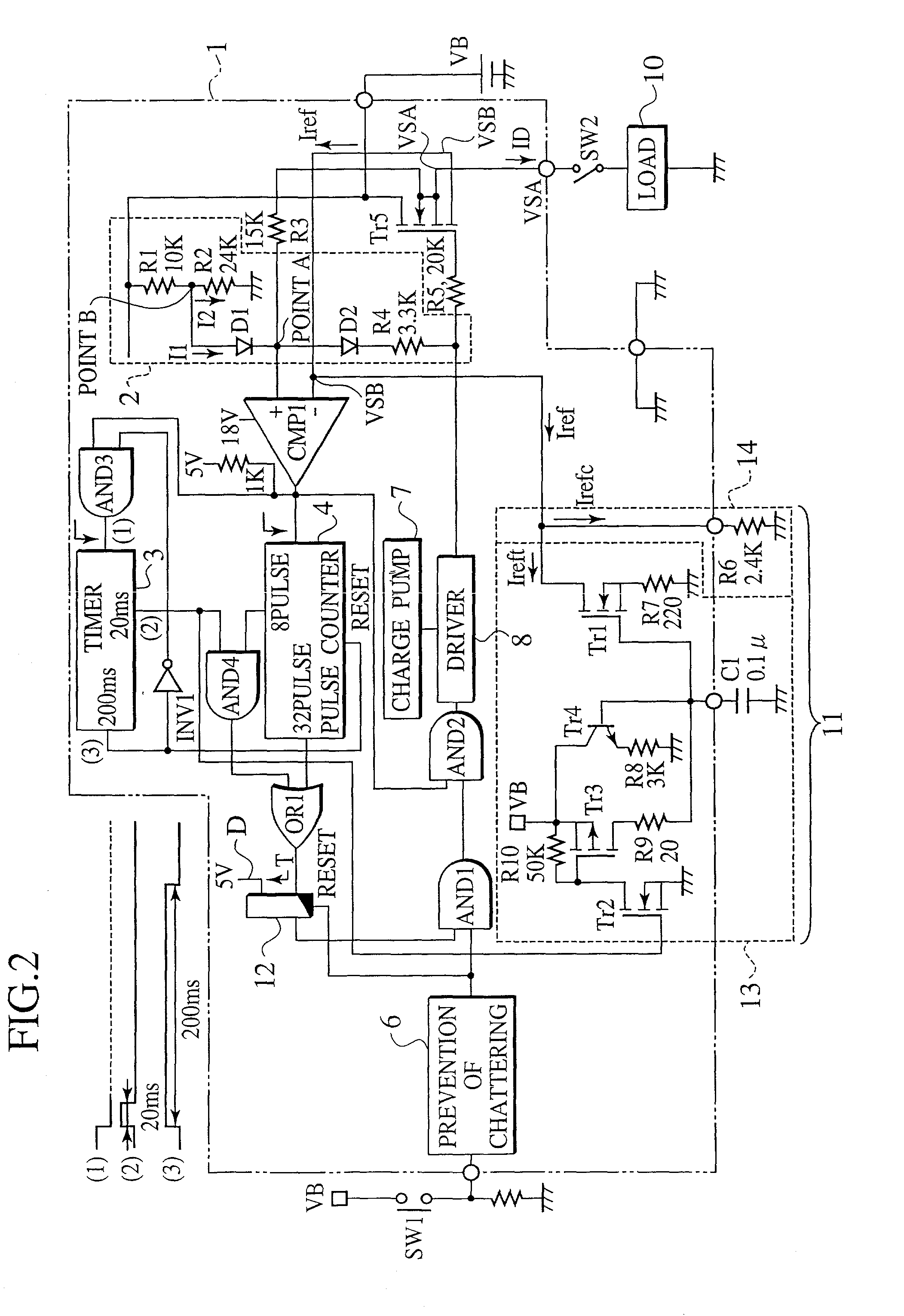Semiconductor switching device with function for vibrating current, thereby shutting down over-current
a switching device and electromagnetic current technology, applied in electronic switching, emergency protective arrangements for limiting excess voltage/current, pulse techniques, etc., can solve the problems of overheat shutdown function not working, shunt resistor thermal loss, and years cannot be ignored
- Summary
- Abstract
- Description
- Claims
- Application Information
AI Technical Summary
Benefits of technology
Problems solved by technology
Method used
Image
Examples
first embodiment (
[0129] First Embodiment (According to First Semiconductor Switching Device 1)
[0130] In the first embodiment, an operation of the first switching device 1 when a normal lamp load is used will be described here. A case in which a lamp does not function as a shutdown function, lights, and continuously lights is assumed. A lamp load 10 is employed as a load having two 21 W bulbs connected in parallel. FIG. 3 is a graph showing a signal waveforms of a switching circuit 1 when the bulb lights. A time of 50 milliseconds per scale is taken on a horizontal axis. On a vertical axis, there are taken a source potential (VSA) of the main FET (QA) of Tr5; a voltage representing a timer output of 200 milliseconds outputted at an output terminal 3 until 200 milliseconds have been measured from the start of the timer 3; QA drain current ID; and drain current Iref of the reference FET (QB) of Tr5 obtained by "n" times. A unit of the vertical axis are shown at the right side of a respective one of VSA...
second embodiment (
[0135] Second Embodiment (According to First Semiconductor Switching Device 1)
[0136] In a second embodiment, a description will be given with respect to an operation of a first switching device 1 in the case where a lamp load is further added, and an overload state occurs when a normal lamp load lights. When the lamp lights, if an attempt is made to illuminate another lamp, the shutdown function works, and all the lamps are turned OFF. A lamp load having two 21 W bulb lamps connected in parallel is used as a lamp load that initially lights. One 21 W bulb lamp is used as an additional lamp load for overload, and is connected in parallel to two lighting lamps. FIG. 7 is a graph showing signal waveforms of a switching circuit until an overload has been added and shut down when a bulb lights. A time of 20 milliseconds per scale is taken on the horizontal axis. VSA, input signal (gate driving signal) to driver 8, ID, and n.times.Iref are taken on the vertical axis. When n.times.Iref fall...
third embodiment (
[0140] Third Embodiment (According to First Semiconductor Switching Device 1)
[0141] In a third embodiment, a description will be given with respect to a first switching device 1 when a lamp load being overload is used. A lamp does not light because a shutdown function works. A lamp load 10 is employed as a load having three 21 W bulb lamps connected in parallel. In the device 1, n.times.Iref is set such that overload is obtained by three lamps rather than two lamps. FIG. 11 is a graph showing signal waveforms of a switching circuit from driver input signal ON to shut down. A time of 100 microseconds per scale is taken on the horizontal axis. VSA, input signal, ID, and n.times.Iref are taken on the vertical axis. QA is shut down when eight ON / OFF operations are repeated. In a process in which ID and n.times.Iref is increased each time, ID that has been smaller than n.times.Iref is greater than n.times.Iref close to 135 A. By this reversal, QA and QB are turned OFF. VSA and VSB (not s...
PUM
 Login to View More
Login to View More Abstract
Description
Claims
Application Information
 Login to View More
Login to View More - R&D
- Intellectual Property
- Life Sciences
- Materials
- Tech Scout
- Unparalleled Data Quality
- Higher Quality Content
- 60% Fewer Hallucinations
Browse by: Latest US Patents, China's latest patents, Technical Efficacy Thesaurus, Application Domain, Technology Topic, Popular Technical Reports.
© 2025 PatSnap. All rights reserved.Legal|Privacy policy|Modern Slavery Act Transparency Statement|Sitemap|About US| Contact US: help@patsnap.com



